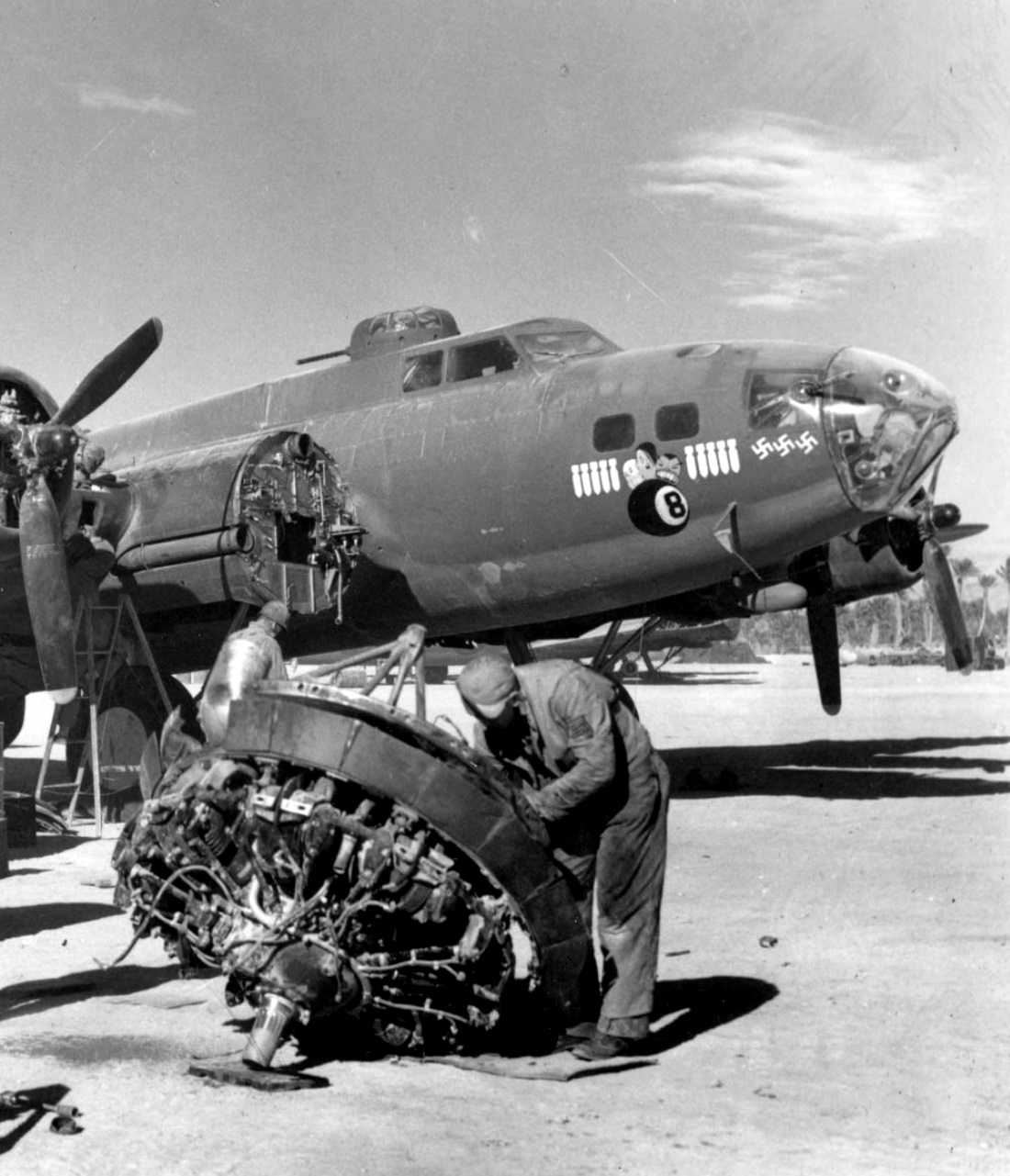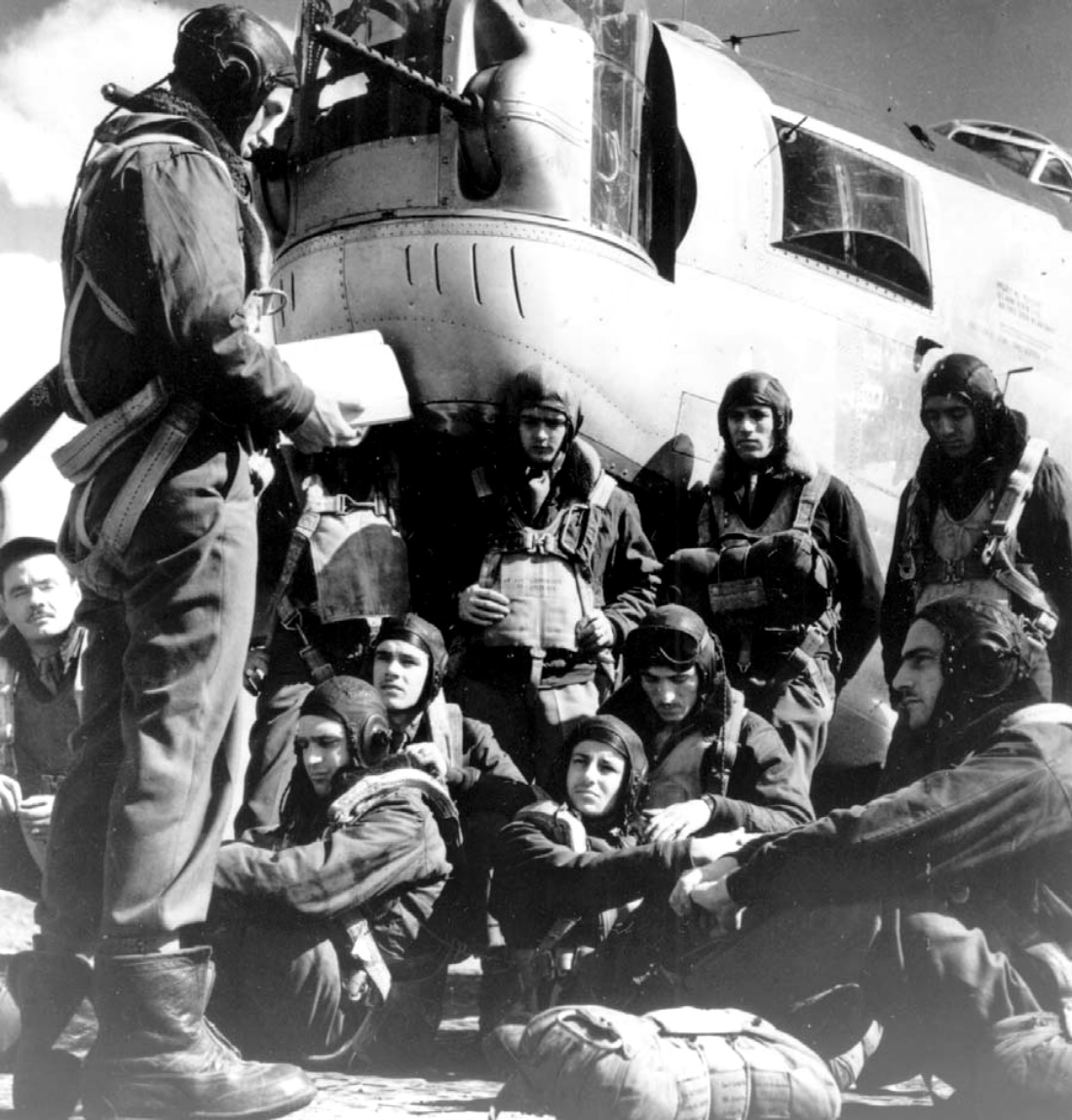Air Force men at Breakfast in the Desert. The mornings were often cold even in the summer and the men wore their heavy leather jackets
Repairing the Motor of an Heavy Bomber B-17, the Boeing Flying Fortress. The sand and dust of the desert were hard on engines of all kinds. On the nose of the plane, swastikas indicate number of enemy aircraft shot down and bombs show number of bombing missions flown. (B–17)
Crew of a Heavy Bomber before taking off on a mission. During the first few months after the landings, the Allied air forces were handicapped in their operations from North African bases through lack of suitable airfields. The lack of all-weather facilities such as hard-surfaced runways, taxiways, and hardstands was particularly serious in the rainy winter season of 1942–43. In the area from the Atlantic coast of Morocco to the Tunisian border, there were only four air bases with any kind of hard-surfaced runways: Port-Lyautey, north of Casablanca; Tafaraoui, near Oran; Maison Blanche at Algiers; and the Bone airfield on the coast near the Tunisian border. (B–24)
(Above and Below) Digging out a Mired Flying Fortress from the mud of a North African bomber base













